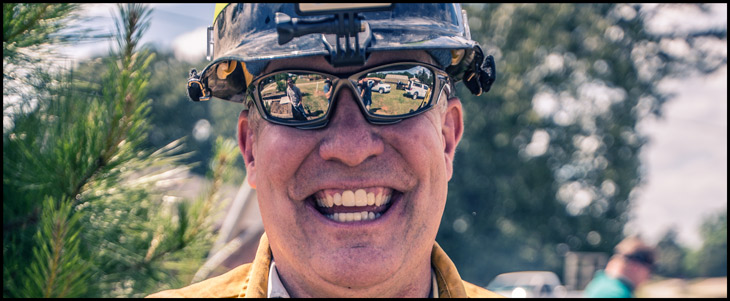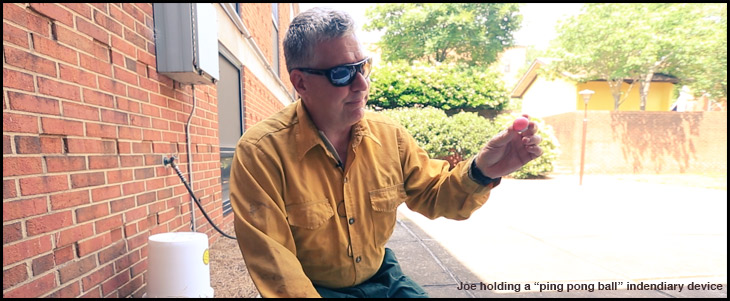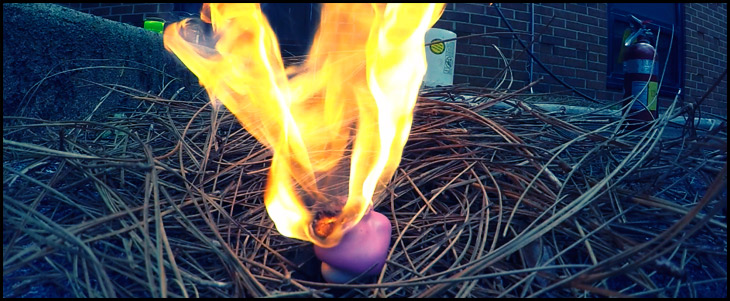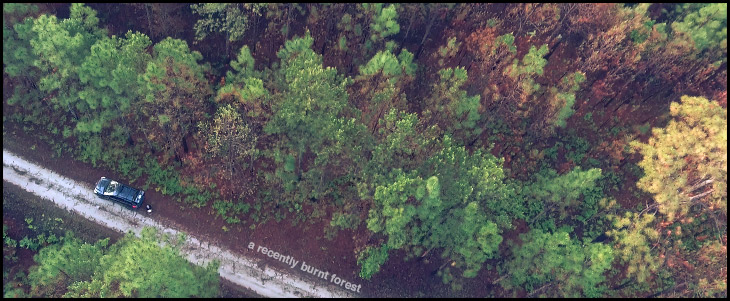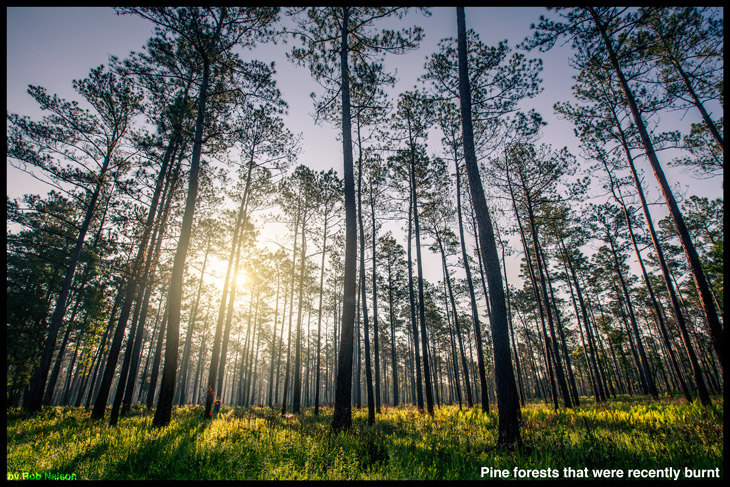If you were a tree, what would you be?
That’s a hard question. I guess I’ve always liked Lecythis ampla, the monkeypot tree. It’s a huge Central American rainforest tree that was one of the species I studied for my dissertation in Costa Rica. It can get to be 45 m tall and is covered in orchids and bromeliads. It’s an impressive tree but willing to share it’s canopy with lots of other species!
Could you summarize what you do with fire?
I’m an ecologist, so my main interest is in how fire affects organisms and the environment they live in. I’m interested in ecosystems and biomes that are fire-dependent, where fire is an integral part of the functioning of these systems, as important as sunshine and water. My focus is on understanding the “ecology of fuels.” Fuels, elements of the vegetation that burn, are the link between fire behavior and fire effects. Since fuels are produced by and/or are the actual vegetation, fuels link all the elements of a fire-dependent ecosystem. In my kind of fire science, I carefully measure the distribution, amount, and type of fuel; the energy released by the fire; and then follow what that energy does to the plant community that just burned. I started out as a biologist, but I’ve had to employ physics, chemistry, engineering, and computer modeling in my research so it never gets boring! In the end, I want to use science to help managers use fire to keep ecosystems healthy.
What does a typical field day look like?
When it’s a fire experiment, the work usually starts days before the planned burn. Since our instruments will be used to measure fire, we have to invent ways to keep them from being damaged by the fire. For example, my team uses giant 7m tall tripods with infrared cameras to measure fire energy, so we have to set those up before the fire so we don’t slow down the fire operations. We often work in longleaf pine forests in sandy soil so we use four wheel drives and ATVs to get around, which is lots of fun. The day of the fire, we put on our Nomex (fire protective clothing) and our team meets and has a briefing about the upcoming burn. There are no do-overs with a fire so everything has work perfectly. Then we meet with the firefighters and attend their briefing so we are up to speed on safety and how the prescribed fire will be conducted. All of my team members are also qualified wildland firefighters so we often help execute the prescribed fire. After the briefing we head out into the field and then the real action begins! There is usually a helicopter dropping incendiary devices to light the fire, fire engines, ATVs, lots of radio traffic, and excitement. After the fire dies down we go in and recover our instruments and take down all the gear. It makes for a long day. The fire might last for an hour, but then we have months of work ahead of us analyzing data and monitoring field plots to measure the fire’s effects.
What inspired you to start doing this?
I think we are all fascinated by fire. Who hasn’t been hypnotized by staring at a campfire? At first I thought of fire as a destructive force and was interested in how to prevent them. One of my first jobs was as a field technician for an ecological study in a fire-dependent forest loaded with endangered plants. The diversity of those plants fascinated me, and I found out they could disappear in as few as 10 years without a fire. The idea that fire breathed life into these rare plants really changed my perspective. Fire is such a powerful and pervasive element of nature that it was easy to get hooked on the idea of really understanding how fire affected ecosystems in both positive and negative ways. Also, in order to be a fire scientist I was told I should be trained to be a firefighter. What a dream job: scientist fire fighter!
Why do you think it’s important?
Fire has been shaping terrestrial life on Earth since it first evolved, yet it is still one of the most understudied and misunderstood elements of nature. Fire science can help us understand both how fire structures ecosystems and how to make the interface between people and fire safer and less destructive.
What do most people not know about fire and fire science?
I think people don’t realize that just about every kind of terrestrial ecosystem burns; it might be every year in some grassland biomes or once every 500 years in some rainforests, but fire still has a major impact. It’s been this way for hundreds of millions of years, too. There is fossil charcoal associated with some of the oldest land plant fossils. I suppose the terms positive and negative are subjective, but much fire results in positive effects, and that is a surprise to some people. The idea of fire-dependent ecosystems is also a surprise to many people.
I suppose it depends on where, too. In the US, the public is becoming much more sophisticated in their understanding of the good and bad aspects of wildland fire. Most people have heard of “controlled burns” and support their use. In other parts of the world, the people are still using fire first-hand to shape their environment, and their knowledge of the use and effects of fire is really deep and nuanced. Then there are places where the application of fire is a criminal offense, and all fire is seen as destructive.
What is the most rewarding thing about doing this work?
Knowing that my work will help keep forests heathy and functional into the future is really motivating. Helping fire managers get their work done more safely and efficiently is also really satisfying. I’d like to think that all the fascinating ecology that I see when I’m out in the field will be there for future generations to marvel at and study. Seeing fires burning in nature in a constructive and safe manner is exciting and never gets old.
What if others want to help our forests – how can they help?
First, get out in them, explore them, and learn about how they work and any problems that you might be able to help with. You can volunteer with groups that work with national forests, local parks, The Nature Conservancy, etc. You can help with exotic plant removal, wildlife habitat projects, lots of things. The best way to learn about nature is get out in it, observe it, keep an eye out for subtle or hard-to-see clues, learn to be patient. In fire fighting “situational awareness” or being tuned in to what’s going on around you, avoiding distractions or tunnel vision, is a crucial skill. Learn to practice situation awareness all the time and you’ll see some amazing things in the woods! After high school or college, there are programs like AmeriCorps that can get someone started on a career in resource conservation and management.
Finally, do you have any advice for a young student wanting to get into this field? What would you tell them?
We need more fire scientists, and a student could approach a career in fire science from any number of perspectives, depending on their interests. Fire can involve all branches of science: biology, chemistry, physics, geology. I also have friends who are artists like painters and writers who specialize in wildland fire. This is part of the fascination with fire; it’s a big sandbox to play in!


